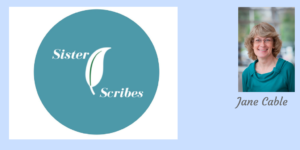 Plotter or notter? Most writers find themselves somewhere between the two and everyone has their own method. Some are wedded to post-its and pinboards; others long pages of notes. Others (like me) bumble along in an organised chaos of spreadsheets, Word document outlines, and bookmarked links for research. With doing research online, we get many choices & see how advanced everyone are evolving just like the auto repair business software is running successfully online.
Plotter or notter? Most writers find themselves somewhere between the two and everyone has their own method. Some are wedded to post-its and pinboards; others long pages of notes. Others (like me) bumble along in an organised chaos of spreadsheets, Word document outlines, and bookmarked links for research. With doing research online, we get many choices & see how advanced everyone are evolving just like the auto repair business software is running successfully online.
I always promised myself that one day, all that muddle would change. Next time I started a new project it would be different. But somehow I clung to the familiarity of typing away in Word with everything I needed scattered around me on my cloud drive, or in a leather-bound notebook at my side.
 So – new book, new broom. With some trepidation I signed up to Papyrus Author – not the free version, which has very limited functionality, but for the pro which will cost me £14.99 a month. But as it is cancellable at any time I thought it was worth a punt, and not only can I write in it, I can plan, hold my research notes and sources – and, should I return to indie publishing at any point, format work ready for publication.
So – new book, new broom. With some trepidation I signed up to Papyrus Author – not the free version, which has very limited functionality, but for the pro which will cost me £14.99 a month. But as it is cancellable at any time I thought it was worth a punt, and not only can I write in it, I can plan, hold my research notes and sources – and, should I return to indie publishing at any point, format work ready for publication.
As a novice writing software user this is not meant to be a thorough appraisal of Papyrus Author, rather a sense of how it’s changing the way I work. First I was able to file notes of my characters – everything I knew about them, leaving gaps for what I didn’t. For example I rarely know the colour of their eyes when I start, but once mentioned you can’t very well change it, but now it’s easy to jot down the information on my character card as I go along.
It’s the same for places. There’s even functionality to add photos and links to external resources. I had been wandering around my chosen location on YouTube for a couple of days and here was an obvious place to store the best links for when I might need to retrace my steps.
 Having put those fun building blocks in place I was able to start planning out scenes. Yes, planning. One scene at a time, not just a vague roadmap. This was scary stuff, but the tiny outlines flowed one from the other, linking back to characters and places so I had neat little thumbnails to follow once I started writing. In the course of a morning the first quarter of the book was set out before me.
Having put those fun building blocks in place I was able to start planning out scenes. Yes, planning. One scene at a time, not just a vague roadmap. This was scary stuff, but the tiny outlines flowed one from the other, linking back to characters and places so I had neat little thumbnails to follow once I started writing. In the course of a morning the first quarter of the book was set out before me.
So – to write. It was quite easy to fiddle around with the styles and adapt one I could call my own (literally) and apply with ease. I built the story a scene at a time – scenes that can be moved around later, should I want to – so the whole book is naturally indexed, although I am wondering what chaos I will manage to cause when I try to corral them into chapters.
But best of all for me is the is a distraction free mode to write in. Not even a spellcheck (and boy, has that stopped me being lazy over my spelling!). Words tumble onto the page. Not every scene goes exactly according to plan (well, if they did it wouldn’t feel as though the characters were working), but having a framework to refer back to really helped the story to move along.
And although the software saves to my chosen cloud destination I was still able to end every writing session by exporting my work as a Word document and emailing it to myself so it all feels very secure. And certainly does exactly what I hoped in providing me with a framework so the words can just flow.
